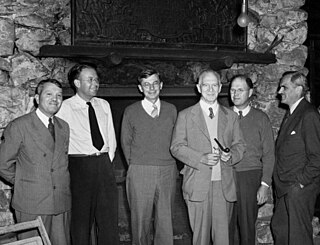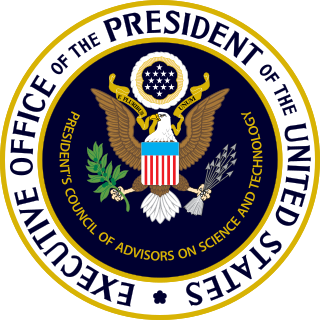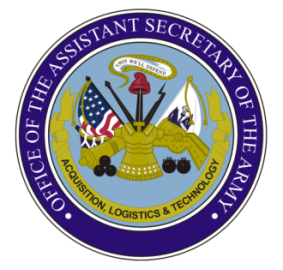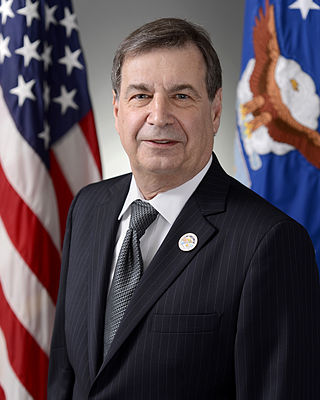
The National Security Act of 1947 was a law enacting major restructuring of the United States government's military and intelligence agencies following World War II. The majority of the provisions of the act took effect on September 18, 1947, the day after the Senate confirmed James Forrestal as the first secretary of defense.

The Ministry of Defence is a ministerial department of the Government of the United Kingdom. It is responsible for implementing the defence policy set by the government and serves as the headquarters of the British Armed Forces.

Norman Ralph "Norm" Augustine is a U.S. aerospace businessman who served as United States Under Secretary of the Army from 1975 to 1977. Augustine served as chairman and CEO of the Lockheed Martin Corporation. He was chairman of the Review of United States Human Space Flight Plans Committee.
Ivan Alexander Getting was an American physicist and electrical engineer, credited with the development of the Global Positioning System (GPS). He was the co-leader of the research group which developed the SCR-584, an automatic microwave tracking fire-control system, which enabled M9 Gun Director directed anti-aircraft guns to destroy a significant percentage of the German V-1 flying bombs launched against London late in the Second World War.

Ashton Baldwin Carter was an American government official and academic who served as the 25th United States secretary of defense from February 2015 to January 2017. He later served as director of the Belfer Center for Science & International Affairs at Harvard Kennedy School.

The Defense Science Board (DSB) is a committee of civilian experts appointed to advise the U.S. Department of Defense on scientific and technical matters. It was established in 1956 on the second Hoover Commission's recommendation.

The National Defense Research Committee (NDRC) was an organization created "to coordinate, supervise, and conduct scientific research on the problems underlying the development, production, and use of mechanisms and devices of warfare" in the United States from June 27, 1940, until June 28, 1941. Most of its work was done with the strictest secrecy, and it began research of what would become some of the most important technology during World War II, including radar and the atomic bomb. Its working arm was superseded by the Office of Scientific Research and Development in 1941, but it remained as an influential advisory and consulting agency until it was terminated in 1947.

The S-1 Executive Committee laid the groundwork for the Manhattan Project by initiating and coordinating the early research efforts in the United States, and liaising with the Tube Alloys Project in Britain.

The President's Council of Advisors on Science and Technology (PCAST) is a council, chartered in each administration with a broad mandate to advise the president of the United States on science and technology. The current PCAST was established by Executive Order 13226 on September 30, 2001, by George W. Bush, was re-chartered by Barack Obama's April 21, 2010, Executive Order 13539, by Donald Trump's October 22, 2019, Executive Order 13895, by Joe Biden's February 1, 2021, Executive Order 14007 and by Donald Trump again on January 23, 2025 with Executive Order XXXXX.
The President's Science Advisory Committee (PSAC) was created on November 21, 1957, by President of the United States Dwight D. Eisenhower, as a direct response to the Soviet launching of the Sputnik 1 and Sputnik 2 satellites. PSAC was an upgrade and move to the White House of the Science Advisory Committee (SAC) established in 1951 by President Harry S. Truman, as part of the Office of Defense Mobilization (ODM). Its purpose was to advise the president on scientific matters in general, and those related to defense issues in particular. Eisenhower appointed James R. Killian as PSAC's first director.
The National Science Advisory Board for Biosecurity (NSABB) is a panel of experts that reports to the Secretary of the United States Department of Health and Human Services. It is tasked with recommending policies on such questions as how to prevent published research in biotechnology from aiding terrorism, without slowing scientific progress.
The United States Air Force Scientific Advisory Board (SAB) is a Federal Advisory Committee that provides independent advice on matters of science and technology relating to the Air Force mission, reporting directly to the Secretary of the Air Force and Chief of Staff of the Air Force. In the past, it has provided advice on technologies such as: supersonic aircraft, weather forecasting, satellite communications, medical research, crewless airplanes, and defenses against aircraft and missiles. Today, the SAB performs in-depth reviews of the Air Force Research Laboratory's science and technology research, and performs studies on topics tasked by the Secretary and Chief of Staff. Members are appointed by the Secretary of Defense.

The Office of the United States Assistant Secretary of the Army for Acquisition, Logistics, and Technology (ASA(ALT) pronounced A-salt) is known as OASA(ALT). OASA(ALT) serves, when delegated, as the Army Acquisition Executive, the Senior Procurement Executive, the Science Advisor to the Secretary of the Army, and as the senior research and development official for the Department of the Army. The OASA(ALT) also has the principal responsibility for all Department of the Army matters related to logistics.

Ronald Frank Lehman II is currently Director of the Center for Global Security Research at the United States Department of Energy's Lawrence Livermore National Laboratory. He is also Chair of the Governing Board of International Science and Technology Center, an intergovernmental organization headquartered in Moscow and is a member of the Department of Defense Threat Reduction Advisory Committee.

Tan Sri Zakri bin Abdul Hamid has had a distinguished career in science as a researcher, educator, administrator and diplomat.

Dr. Greg Zacharias was the Chief Scientist for the Director of Operational Test and Evaluation, Office of the Secretary of Defense, serving from July 2018 to 2021. Previously, he was the Chief Scientist of the United States Air Force from May 2015 to January 2018. In 2022 he transitioned from the Department of Defense to work with AI-simulation company Pasteur Labs as Director of Government Solutions.
Barry R. Bloom is Joan L. and Julius H. Jacobson Professor of Public Health, Emeritus in the Department of Immunology and Infectious Diseases and Department of Global Health and Population in the Harvard T.H. Chan School of Public Health, where he served as dean of the faculty from 1998 through December 31, 2008.

Stephen Joseph Lukasik was an American physicist who served in multiple high-level defense and scientific related positions for advancing the technologies and techniques for national defense and the detection and control of diverse types of weapons of mass destruction, especially nuclear devices. He was the second longest serving Director of DARPA - the Defense Advanced Research Projects Agency – during which numerous new technologies including packet and internet protocols were developed. He was also the first chief scientist of the Federal Communications Commission where he created its Office of Science and Technology and which facilitated the commercial deployment of new technology that included spread spectrum technology.
Kaufman Thuma Keller, commonly known as K. T. Keller, was an American corporate executive who served as the president of Chrysler Corporation from 1935 to 1950 and as its chairman of the board from 1950 to 1956. He is also known for proposing the creation of the Detroit Arsenal.

Irvy (Igle) Gledhill is a South African physicist at the University of Witwatersrand, School of Mechanical, Industrial & Aeronautical Engineering, in Johannesburg.














